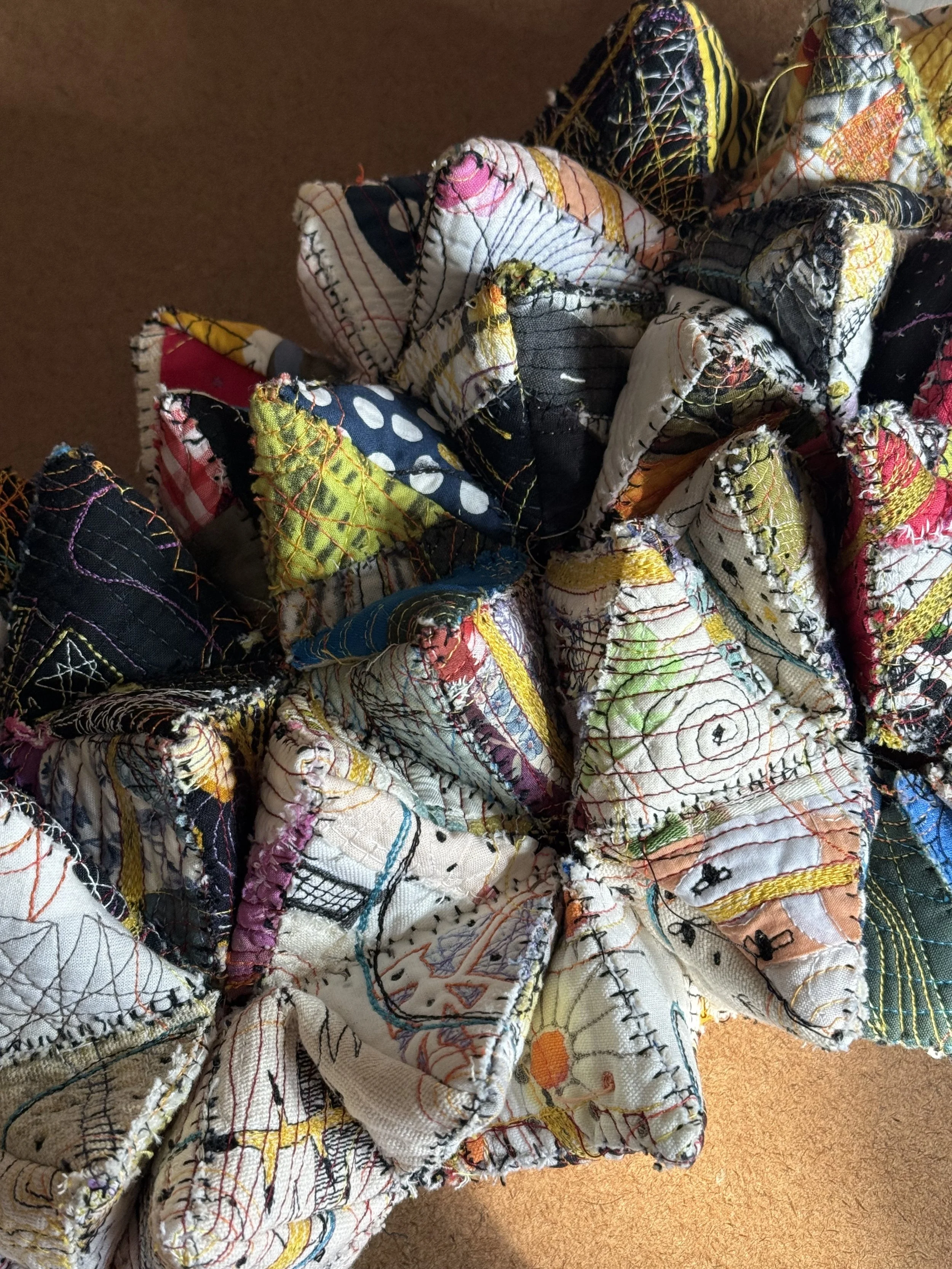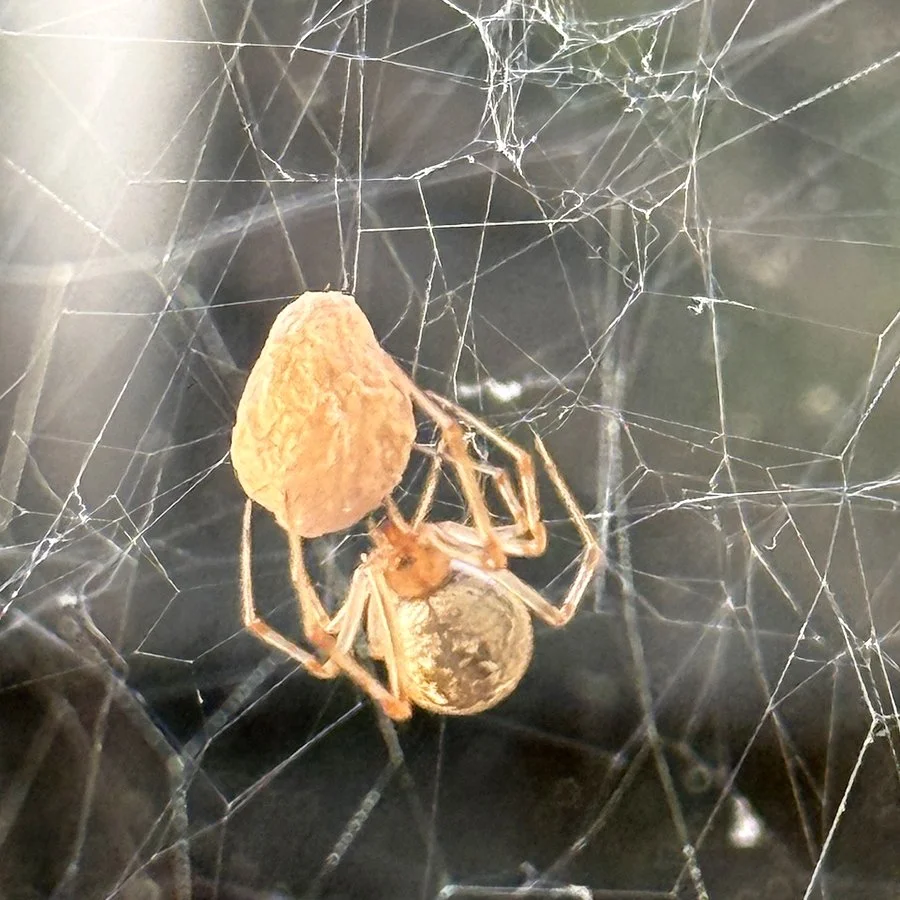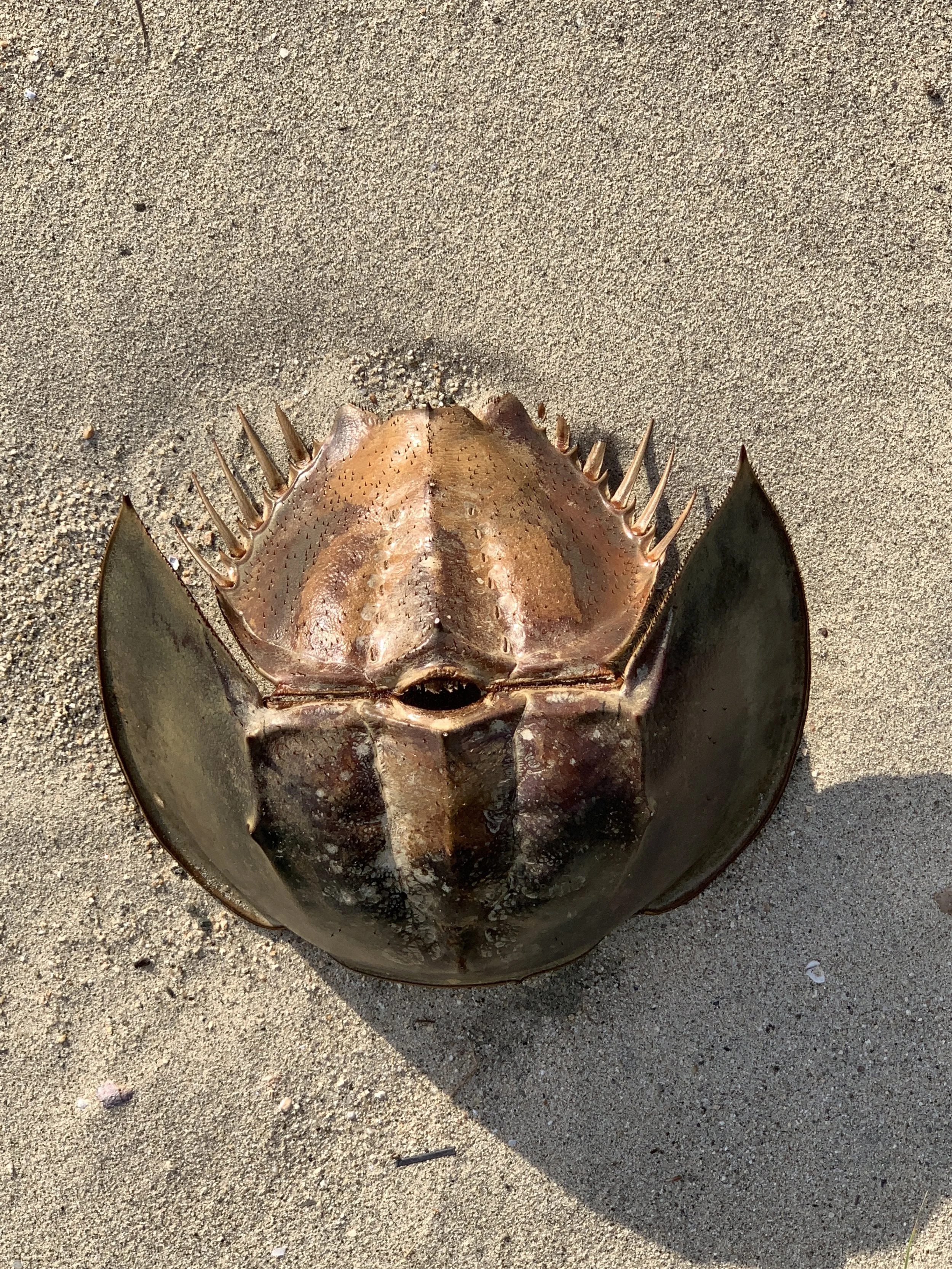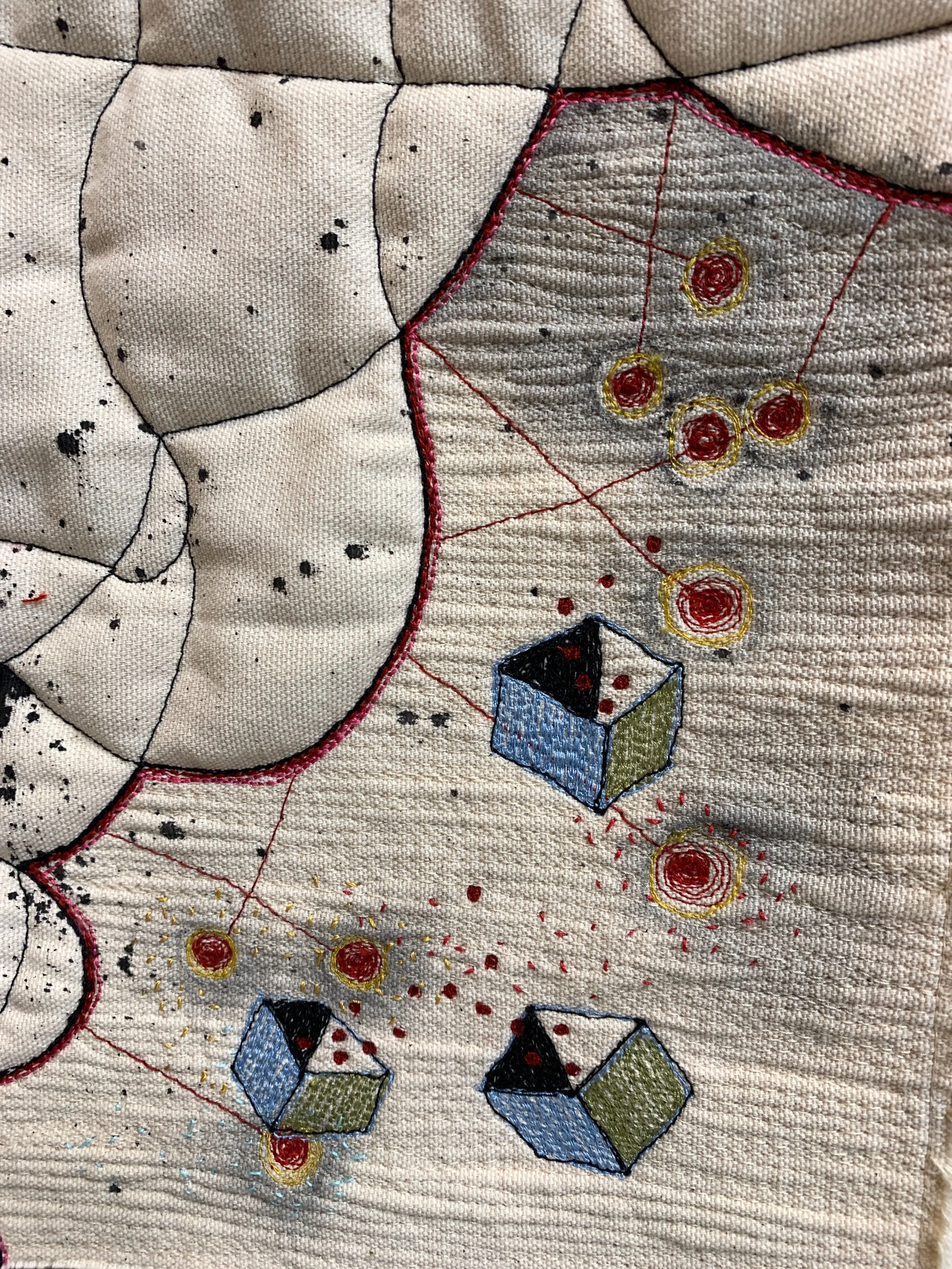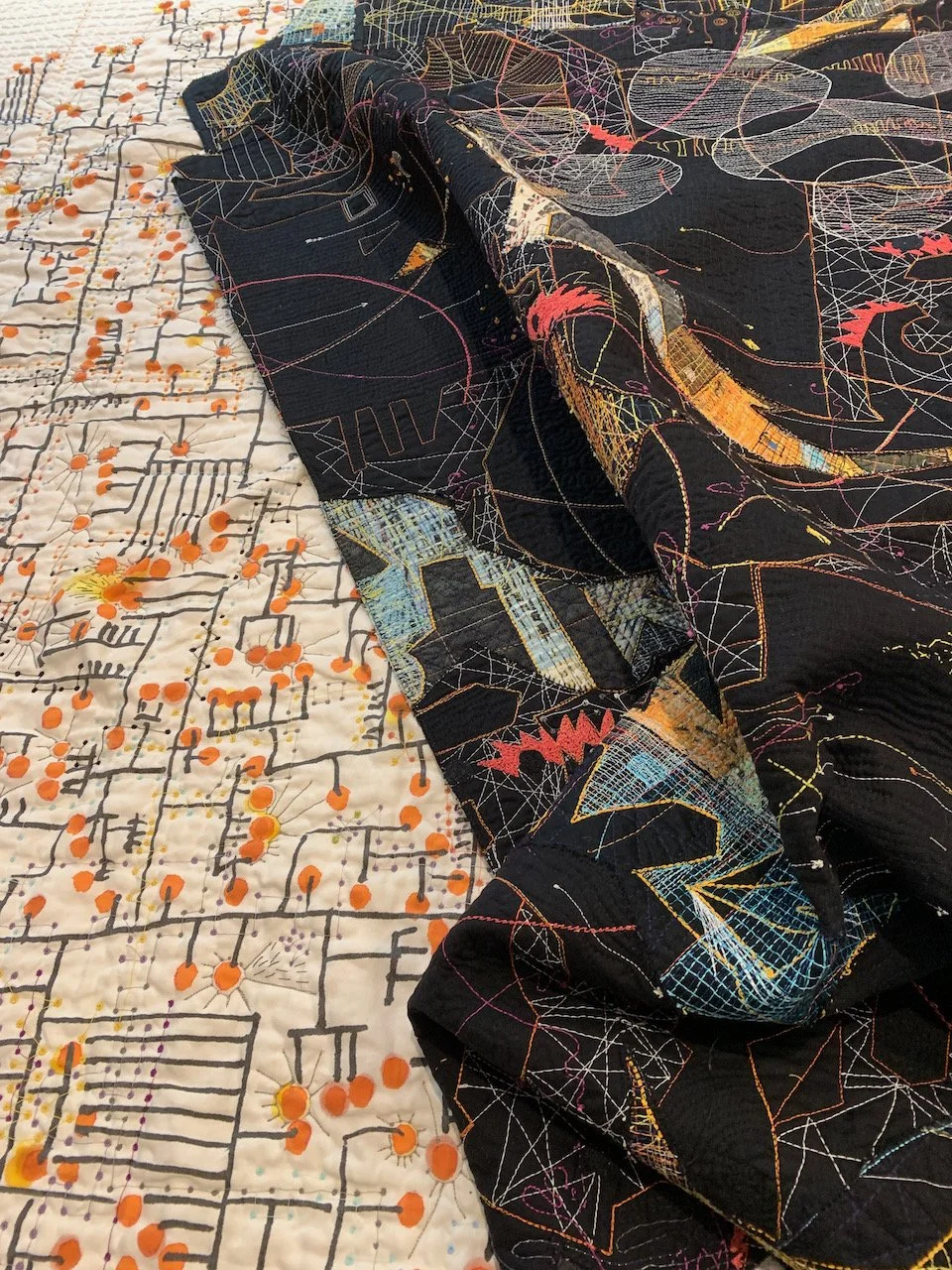I am preparing for a number of shows in 2018 by gathering up all the pieces that are done and planning some that are not. I'm looking for pieces that go together and some that contrast each other well. The studio is covered in pieces that are unpacked, unrolled and stacked. The pieces represent over ten years of work.
Five quilts piled on top of each other. Paula Kovarik
I am also experimenting with new forms. A series of quilt pillars came to life this week. Rolling the quilts over tubes produced a third dimension that appeals to me. Walking around the pillars adds an element of surprise that the flat pieces do not. I especially like the way the back or front is revealed when the tube unrolls as in the one of the right pictured here. Of course that only works if the back is as interesting as the front.
Quilt pillars, Paula Kovarik
This piece, River, has an undulating character that I love. But I never felt that it was finished so I put it on the design board to age for awhile.
When River is rolled like a scroll it reveals the underside and speaks more clearly about my original thoughts in creating it - how the land is affected by the flow of water but also how we have created zones of toxic waste near it.
I recognize recurring themes of confusion, chaos and uncertainty but also mystery, emotion and magic in my work. If I could see one thing in all of them it would be that I am trying to make the invisible visible. A task that thread and cloth can do only if I allow the length of time it takes to create each one be as long as it needs to be. Time spent allows the unknown in.
